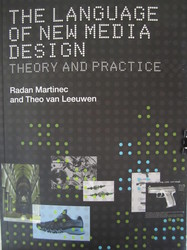Sometimes, actually, quite often, I lose sight of what it is I want to do when I grow up. Wow, this sounds like it's gonna be one of those confessional type post, doesn't it? At any rate, I have come a long way in achieving what it is I want to be when I grow up, but there are times that I lose sight of certain parts. I try to force myself into a box I just don't quite fit into.
Today was my wake-up call. I sat and listened to Cheryl Ball and Ryan Trauman talk about digital design, and it all started coming back to me again. I love being an academic (although I'm sure some would question whether or not I'm truly there :-)), but I also love being a tech geek. Yes, that's me, a geek, a nerd, a gadget gurl, and I'm proud of it. So it's time I start immersing myself into the types of text I want to create.
To that end, tonight I read Susan H. Delagrange's "When Revision Is Redesign: Key Questions for Digital Scholarship" published in Kairos. Delagrange's reflection on her revision on a piece she submitted to Kairos that was returned with "revisions and resubmit" opened my eyes to what digital composition can and even should be. The article (found here, http://kairos.technorhetoric.net/14.1/inventio/delagrange/index.html) explains Delagrange's revision process and lays out what she believes she did wrong, as well as the things she insisted on keeping in the text for strong rhetorical reasons.
Delagrange remarks that "by highlighting some of the complexities of the design and redesign of one digital project, I hope to demonstrate the complicated relationship between seeing and design in envisioning and enacting argument, to make more visible the rhetorical and intellectual work of scholarship in digital media, and to argue by example for publishing scholarship about new media in new media" ("Introduction"). Delagrange has inspired me once again to strive for what I want to be when I grow up. I want to be a new media author and designer. I have to marry my past (techie) with my current status (academic) in order to be happy. I have to find that balance. Delagrange has reminded me once more of what I want to do, and I am on the right track again (for now).
Today I read the introduction/first chapter to Radan Martinec and Theo van Leeuwen's text The Language of New Media Design: Theory and Practice. First, I'm not afraid to admit that this is one of those texts I ended up reading out loud. Some times that is about the only way I can focus and take in what I'm actually reading (and even that doesn't always work). Unlike some books where you can read the intro and get a general idea of what the book is about and then fill in the blanks as you read, I have the distinct impression that with this book you had better understand this first chapter completely before proceeding or else you will be lost.
The authors discuss New Media Design in terms of semantics or semiotics. The authors state that the purpose of the book "is that new media are, or should be, structured by invisible underlying patterns that connect image, sound and text into meaningful wholes" (1). They then get into a brief but interesting discussion of systemic linguistics (about here was when I decided reading out loud might be beneficial), move to a discussion of non-linear models such as the part-whole tree and star, and then talk about strategies for employing models and methods, all based on semantics.
Even though I had difficulties at times staying focused, this is definitely a book that I am interested in jumping right into. The intro was only 14 pages and yet I have notes scribbled all over the margins. I was definitely immersing myself into this text and interacting with it in a meaningful way (the marginal comments are not snarky). One thing the authors note toward the end of the intro is that "the intention of the text, as realized by its lexical and grammatical patterns, needs to be respected when translating it into a non-linear model. Domains (and texts) of any complexity tend to require more than one simple non-linear model to map out their semantic structure" (13). I think that this is often over looked when new, and maybe even some seasoned, designers take on the task of designing new media products.
This introduction even got me to thinking about the purpose of this new media site and whether or not I am reaching my intended audience. When a text immediately gets me thinking about things I am doing, then I am interested. While I am not a huge fan of semiotics, and have picked up and sat down the Introduction to Semiotics a million times (well, maybe only three or four, then I lost it), I like the way these guys are employing semantics to drive home the point that the design of a site has to connect to the meaning!!
Ok, enough said by me. Feel free to blast away or simply comment if you'd like.

 RSS Feed
RSS Feed

